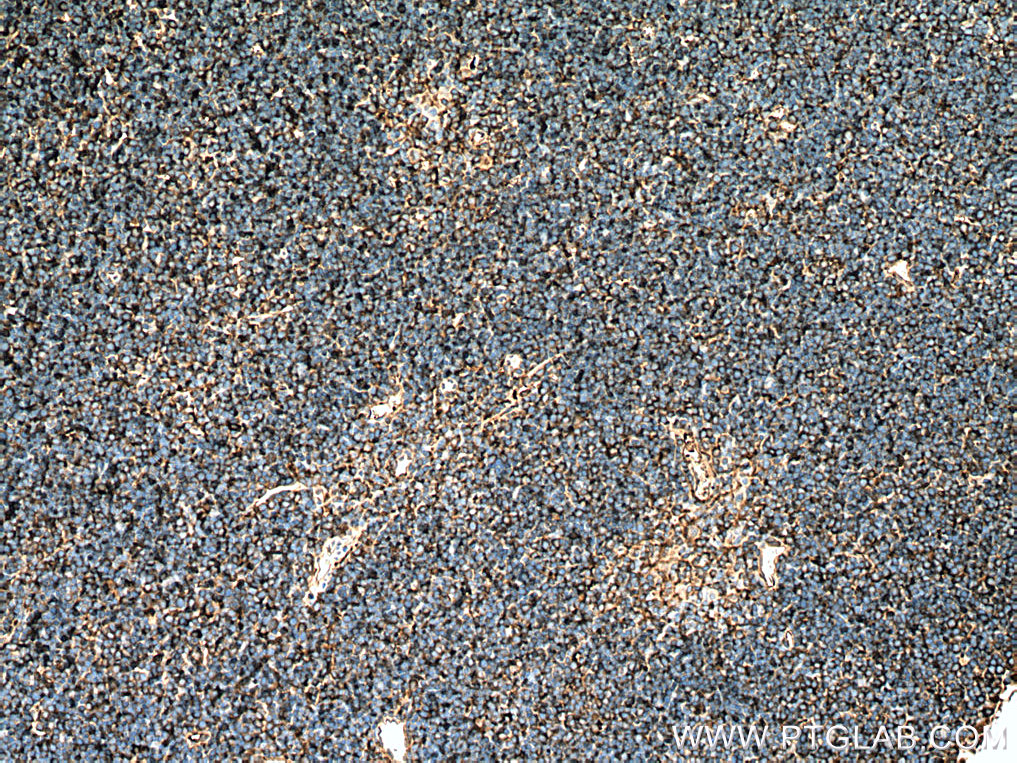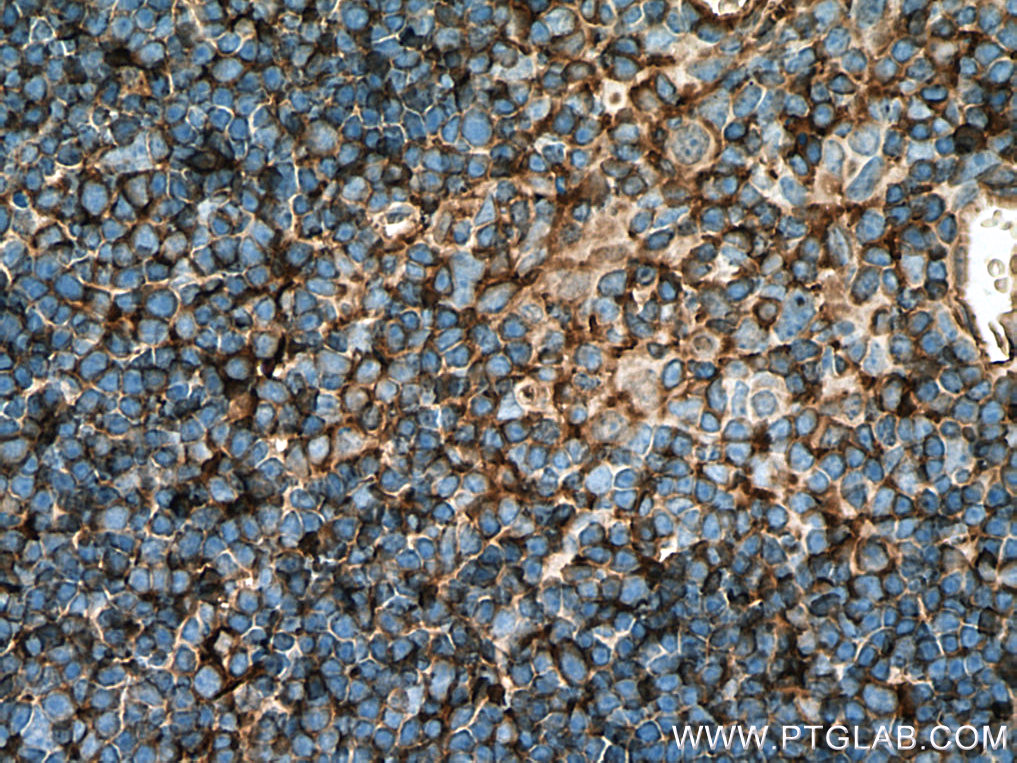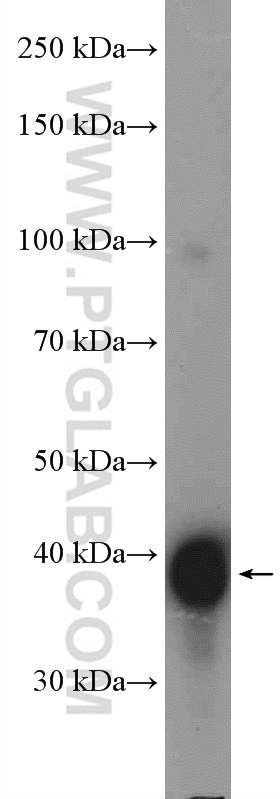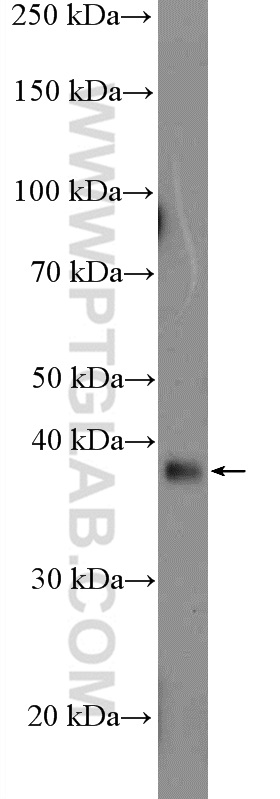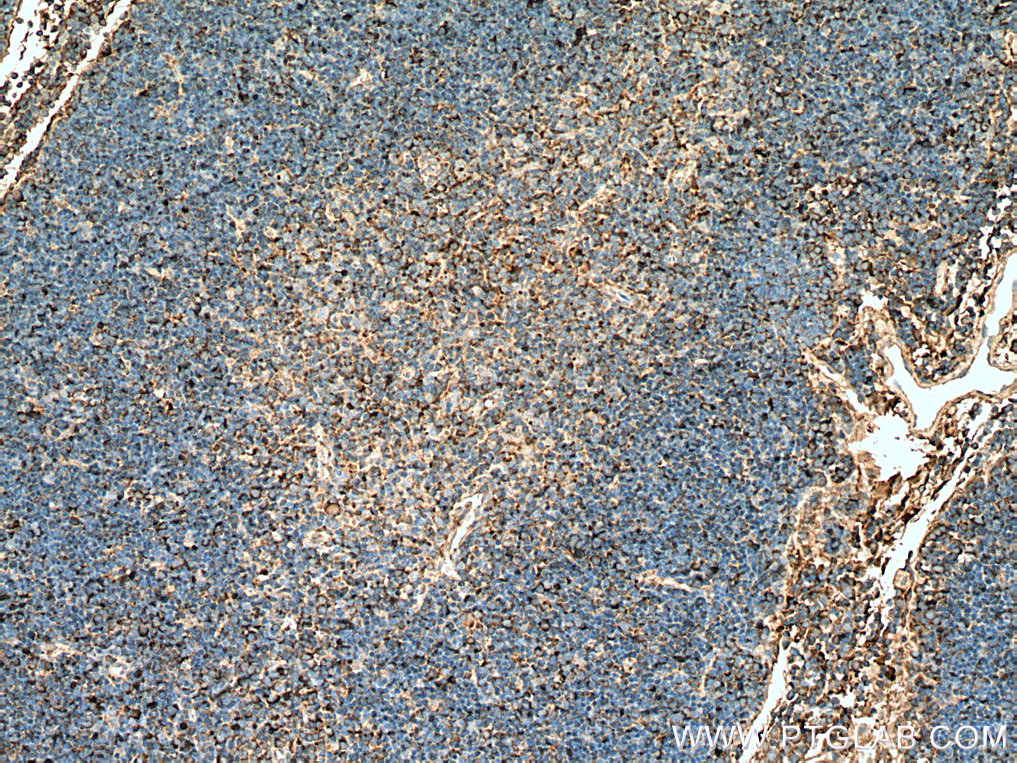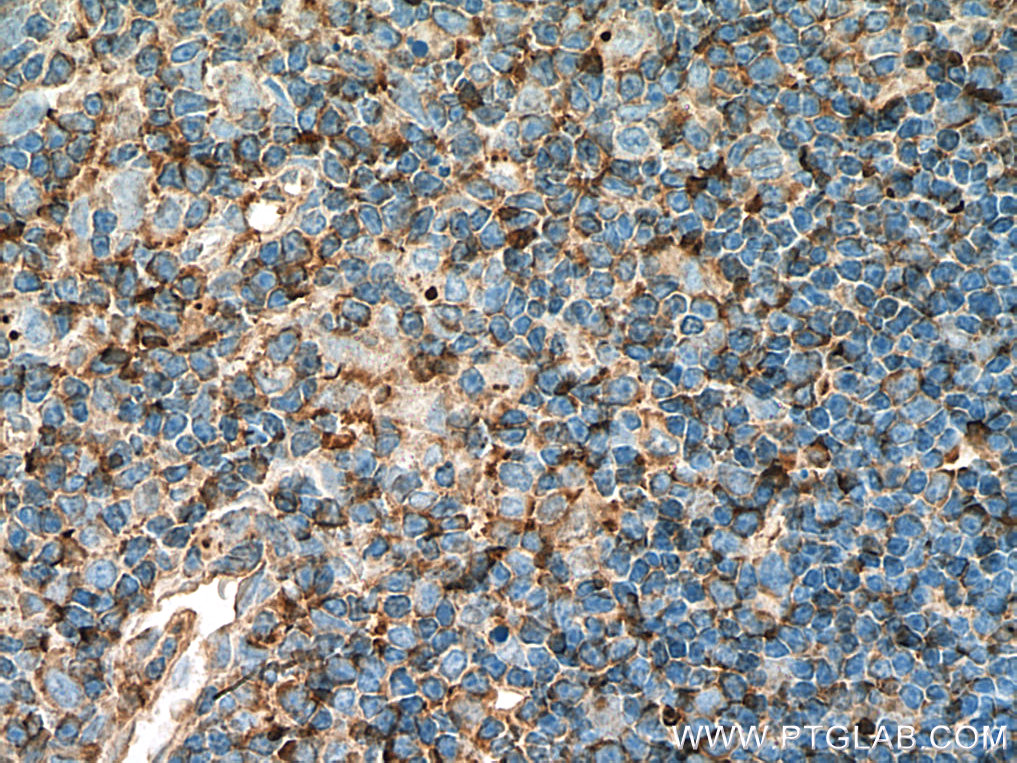验证数据展示
经过测试的应用
| Positive WB detected in | K-562 cells, mouse thymus tissue |
| Positive IHC detected in | mouse thymus tissue, rat thymus tissue Note: suggested antigen retrieval with TE buffer pH 9.0; (*) Alternatively, antigen retrieval may be performed with citrate buffer pH 6.0 |
推荐稀释比
| 应用 | 推荐稀释比 |
|---|---|
| Western Blot (WB) | WB : 1:500-1:2000 |
| Immunohistochemistry (IHC) | IHC : 1:200-1:800 |
| It is recommended that this reagent should be titrated in each testing system to obtain optimal results. | |
| Sample-dependent, Check data in validation data gallery. | |
产品信息
27319-1-AP targets AAGAB in WB, IHC, ELISA applications and shows reactivity with human, mouse, rat samples.
| 经测试应用 | WB, IHC, ELISA Application Description |
| 经测试反应性 | human, mouse, rat |
| 免疫原 |
CatNo: Ag26340 Product name: Recombinant human FLJ11506 protein Source: e coli.-derived, PGEX-4T Tag: GST Domain: 1-315 aa of BC058886 Sequence: MAAGVPCALVTSCSSVFSGDQLVQHILGTEDLIVEVTSNDAVRFYPWTIDNKYYSADINLCVVPNKFLVTAEIAESVQAFVVYFDSTQKSGLDSVSSWLPLAKAWLPEVMILVCDRVSEDGINRQKAQEWCIKHGFELVELSPEELPEEDDDFPESTGVKRIVQALNANVWSNVVMKNDRNQGFSLLNSLTGTNHSIGSADPCHPEQPHLPAADSTESLSDHRGGASNTTDAQVDSIVDPMLDLDIQELASLTTGGGDVENFERLFSKLKEMKDKAATLPHEQRKVHAEKVAKAFWMAIGGDRDEIEGLSSDEEH 种属同源性预测 |
| 宿主/亚型 | Rabbit / IgG |
| 抗体类别 | Polyclonal |
| 产品类型 | Antibody |
| 全称 | alpha- and gamma-adaptin-binding protein p34 |
| 别名 | AAGAB, FLJ11506 |
| 观测分子量 | 38 kDa |
| GenBank蛋白编号 | BC058886 |
| 基因名称 | AAGAB |
| Gene ID (NCBI) | 79719 |
| RRID | AB_2880841 |
| 偶联类型 | Unconjugated |
| 形式 | Liquid |
| 纯化方式 | Antigen affinity purification |
| UNIPROT ID | Q6PD74 |
| 储存缓冲液 | PBS with 0.02% sodium azide and 50% glycerol, pH 7.3. |
| 储存条件 | Store at -20°C. Stable for one year after shipment. Aliquoting is unnecessary for -20oC storage. |
背景介绍
Recent study indicate that mutations in AAGAB can cause punctate palmoplantar keratoderma type I (PPKP1; OMIM#148600), also called keratosis punctata palmoplantaris Buschke-Fischer-Brauer. The predicted MW of this protein is 35 kDa. Catalog#27319-1-AP recognises 37-40 kDa band may due to phosphorylation.
实验方案
| Product Specific Protocols | |
|---|---|
| IHC protocol for AAGAB antibody 27319-1-AP | Download protocol |
| WB protocol for AAGAB antibody 27319-1-AP | Download protocol |
| Standard Protocols | |
|---|---|
| Click here to view our Standard Protocols |

